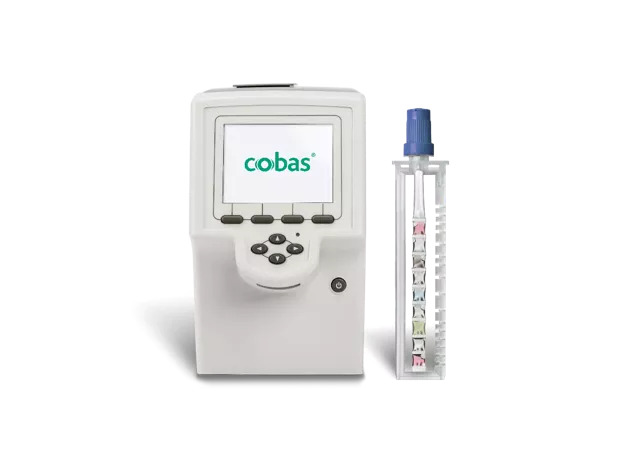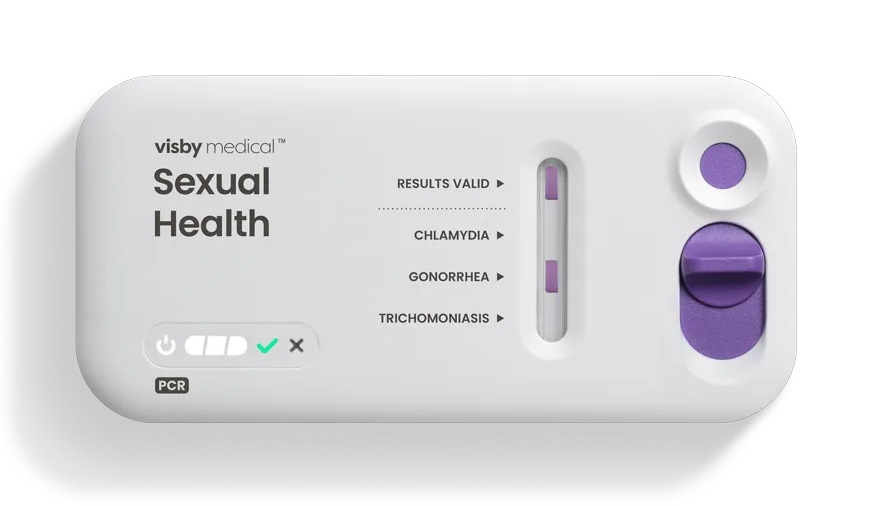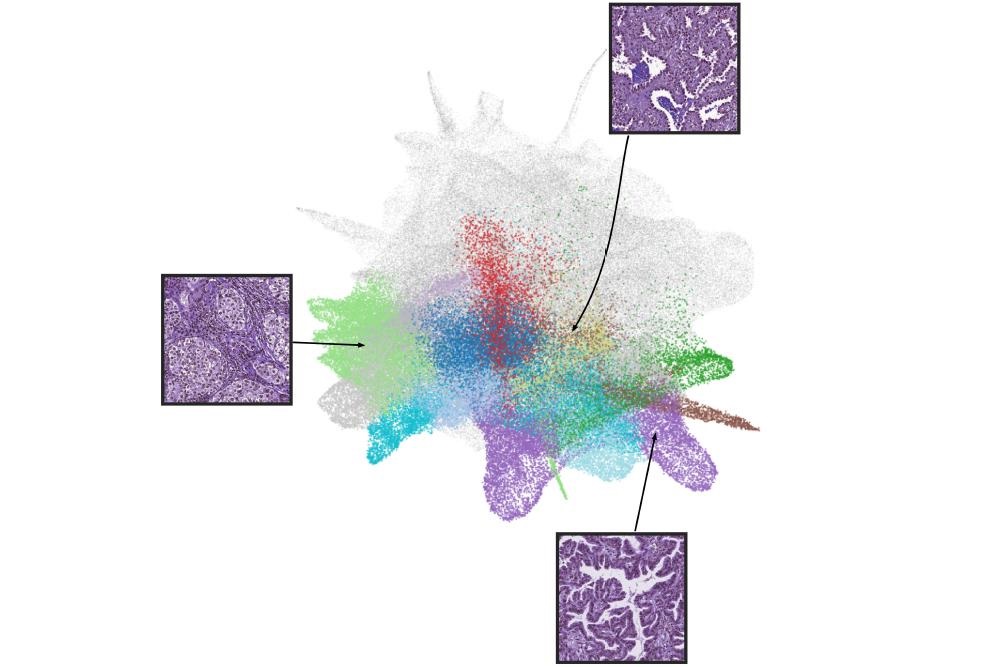New ELISA Kit Measures Chronic Kidney Disease Biomarker
|
By LabMedica International staff writers Posted on 05 May 2015 |

Image: The FGF23 ELISA kit extends the existing line of Biomedica assays directed against chronic kidney disease (Photo courtesy of Biomedica Immunoassays).
A new ELISA kit has been released that is expected to become a valuable tool for researchers investigating new biomarkers that could improve prediction of chronic kidney disease (CKD) progression, as well as discovery of new drug targets.
The emergence of FGF23 as a potentially modifiable risk factor in CKD has led to growing interest in its measurement as a tool to assess patient risk and target therapy. In this regard, Biomedica Immunoassays (Vienna, Austria) has launched the first European CE marked FGF23 (C-terminal) ELISA assay that specifically detects both intact and C-terminal fragments of FGF23 in human serum and plasma. FGF23 (fibroblast growth factor 23) is a 32 kDa protein with 251 amino acids that is proteolytically processed between arginine179 and serine180 to generate N-terminal and C-terminal fragments. FGF23 is mainly secreted by osteocytes and controls phosphate and 1,25(OH)2 vitamin D homeostasis.
The kit comprises a sandwich enzyme immunoassay for the direct determination of FGF23 in human serum and plasma samples. In a first step, standards, samples, controls, and detection antibody (rabbit polyclonal anti-human FGF23-biotin) are dispensed into the wells of microtiter strips, which have been pre-coated with anti-FGF23 antibody. FGF23 present in the standards, samples, or controls binds to the pre-coated antibody in the well and forms a sandwich with the detection antibody. In the washing step all nonspecific unbound material is removed. In a second step, the conjugate (Streptavidin-horse radish peroxidase) is added to the wells and reacts with the detection antibody through avidin-biotin binding. After another washing step, the TMB (tetramethylbenzidine) substrate is dispensed into the wells. The enzyme catalyzed color change of the substrate is directly proportional to the amount of FGF23. This color change is detectable with a standard microtiter plate ELISA reader. A dose response curve of the absorbance (optical density at 450 nanometers) versus standard concentration is generated, using the values obtained from the standard. The concentration of FGF23 in the sample is determined directly from the dose response curve.
FGF23 is associated with cardiovascular and renal outcomes in patients with CKD and adds value to risk assessments based on conventional risk factors. “In particular, the ability to measure FGF23 in both serum and plasma samples and its stability in both matrices after sample collection opens up a significant new capability to learn about the mechanisms driving FGF 23 elevations in CKD,” said Dr. Wolfgang Woloszczuk, CSO of Biomedica Gruppe.
Related Links:
Biomedica Immunoassays
The emergence of FGF23 as a potentially modifiable risk factor in CKD has led to growing interest in its measurement as a tool to assess patient risk and target therapy. In this regard, Biomedica Immunoassays (Vienna, Austria) has launched the first European CE marked FGF23 (C-terminal) ELISA assay that specifically detects both intact and C-terminal fragments of FGF23 in human serum and plasma. FGF23 (fibroblast growth factor 23) is a 32 kDa protein with 251 amino acids that is proteolytically processed between arginine179 and serine180 to generate N-terminal and C-terminal fragments. FGF23 is mainly secreted by osteocytes and controls phosphate and 1,25(OH)2 vitamin D homeostasis.
The kit comprises a sandwich enzyme immunoassay for the direct determination of FGF23 in human serum and plasma samples. In a first step, standards, samples, controls, and detection antibody (rabbit polyclonal anti-human FGF23-biotin) are dispensed into the wells of microtiter strips, which have been pre-coated with anti-FGF23 antibody. FGF23 present in the standards, samples, or controls binds to the pre-coated antibody in the well and forms a sandwich with the detection antibody. In the washing step all nonspecific unbound material is removed. In a second step, the conjugate (Streptavidin-horse radish peroxidase) is added to the wells and reacts with the detection antibody through avidin-biotin binding. After another washing step, the TMB (tetramethylbenzidine) substrate is dispensed into the wells. The enzyme catalyzed color change of the substrate is directly proportional to the amount of FGF23. This color change is detectable with a standard microtiter plate ELISA reader. A dose response curve of the absorbance (optical density at 450 nanometers) versus standard concentration is generated, using the values obtained from the standard. The concentration of FGF23 in the sample is determined directly from the dose response curve.
FGF23 is associated with cardiovascular and renal outcomes in patients with CKD and adds value to risk assessments based on conventional risk factors. “In particular, the ability to measure FGF23 in both serum and plasma samples and its stability in both matrices after sample collection opens up a significant new capability to learn about the mechanisms driving FGF 23 elevations in CKD,” said Dr. Wolfgang Woloszczuk, CSO of Biomedica Gruppe.
Related Links:
Biomedica Immunoassays
Latest BioResearch News
- Genome Analysis Predicts Likelihood of Neurodisability in Oxygen-Deprived Newborns
- Gene Panel Predicts Disease Progession for Patients with B-cell Lymphoma
- New Method Simplifies Preparation of Tumor Genomic DNA Libraries
- New Tool Developed for Diagnosis of Chronic HBV Infection
- Panel of Genetic Loci Accurately Predicts Risk of Developing Gout
- Disrupted TGFB Signaling Linked to Increased Cancer-Related Bacteria
- Gene Fusion Protein Proposed as Prostate Cancer Biomarker
- NIV Test to Diagnose and Monitor Vascular Complications in Diabetes
- Semen Exosome MicroRNA Proves Biomarker for Prostate Cancer
- Genetic Loci Link Plasma Lipid Levels to CVD Risk
- Newly Identified Gene Network Aids in Early Diagnosis of Autism Spectrum Disorder
- Link Confirmed between Living in Poverty and Developing Diseases
- Genomic Study Identifies Kidney Disease Loci in Type I Diabetes Patients
- Liquid Biopsy More Effective for Analyzing Tumor Drug Resistance Mutations
- New Liquid Biopsy Assay Reveals Host-Pathogen Interactions
- Method Developed for Enriching Trophoblast Population in Samples
Channels
Clinical Chemistry
view channel
New ADLM Guidance Provides Expert Recommendations on Clinical Testing For Respiratory Viral Infections
Respiratory tract infections, predominantly caused by viral pathogens, are a common reason for healthcare visits. Accurate and swift diagnosis of these infections is essential for optimal patient management.... Read more
3D Printed Point-Of-Care Mass Spectrometer Outperforms State-Of-The-Art Models
Mass spectrometry is a precise technique for identifying the chemical components of a sample and has significant potential for monitoring chronic illness health states, such as measuring hormone levels... Read more.jpg)
POC Biomedical Test Spins Water Droplet Using Sound Waves for Cancer Detection
Exosomes, tiny cellular bioparticles carrying a specific set of proteins, lipids, and genetic materials, play a crucial role in cell communication and hold promise for non-invasive diagnostics.... Read more
Highly Reliable Cell-Based Assay Enables Accurate Diagnosis of Endocrine Diseases
The conventional methods for measuring free cortisol, the body's stress hormone, from blood or saliva are quite demanding and require sample processing. The most common method, therefore, involves collecting... Read moreMolecular Diagnostics
view channel
Four-In-One Molecular Test Detects and Differentiates Among Most Prevalent Respiratory Viruses in 20 Minutes
The U.S. Centers for Disease Control and Prevention (CDC) has reported that respiratory diseases in the United States reached high levels during the recent autumn and winter seasons, with SARS-CoV-2 leading... Read more.jpeg)
First-Line PSA Testing More Cost-Effective Than First-Line MRI for Prostate Cancer Screening
Current prostate cancer (PCa) screening protocols typically begin with prostate-specific antigen (PSA) testing, which, if elevated, may lead to further assessment using multiparametric magnetic resonance... Read more
Proteomics Platform Identifies Proteins in Blood to Give Cancer Warning 7 Years before Diagnosis
To improve cancer survival rates, it's crucial to understand the disease during its initial stages. Research involving data from thousands of cancer patients has uncovered exciting findings about how blood... Read moreHematology
view channel
Next Generation Instrument Screens for Hemoglobin Disorders in Newborns
Hemoglobinopathies, the most widespread inherited conditions globally, affect about 7% of the population as carriers, with 2.7% of newborns being born with these conditions. The spectrum of clinical manifestations... Read more
First 4-in-1 Nucleic Acid Test for Arbovirus Screening to Reduce Risk of Transfusion-Transmitted Infections
Arboviruses represent an emerging global health threat, exacerbated by climate change and increased international travel that is facilitating their spread across new regions. Chikungunya, dengue, West... Read more
POC Finger-Prick Blood Test Determines Risk of Neutropenic Sepsis in Patients Undergoing Chemotherapy
Neutropenia, a decrease in neutrophils (a type of white blood cell crucial for fighting infections), is a frequent side effect of certain cancer treatments. This condition elevates the risk of infections,... Read more
First Affordable and Rapid Test for Beta Thalassemia Demonstrates 99% Diagnostic Accuracy
Hemoglobin disorders rank as some of the most prevalent monogenic diseases globally. Among various hemoglobin disorders, beta thalassemia, a hereditary blood disorder, affects about 1.5% of the world's... Read moreImmunology
view channel.jpg)
AI Tool Predicts Cancer Patients’ Response to Immunotherapy
Immune checkpoint inhibitors are a form of immunotherapy drug that enables immune cells to target and destroy cancer cells. At present, the Food and Drug Administration has approved two predictive biomarkers... Read more
Molecular Profiling Improves Diagnosis for Children with High Risk Cancers
Cancer remains the leading cause of disease-related death among children in most developed nations, and approximately one-fourth of these patients are diagnosed with aggressive, high-risk, or relapsed... Read moreMicrobiology
view channel
POC STI Test Shortens Time from ED Arrival to Test Results
In a 2024 sexually transmitted infections (STIs) surveillance report by the World Health Organization (WHO), over 2.5 million cases were recorded, alongside a rise in the inappropriate use of antibiotics... Read more
Integrated Solution Ushers New Era of Automated Tuberculosis Testing
Tuberculosis (TB) is responsible for 1.3 million deaths every year, positioning it as one of the top killers globally due to a single infectious agent. In 2022, around 10.6 million people were diagnosed... Read more
Automated Sepsis Test System Enables Rapid Diagnosis for Patients with Severe Bloodstream Infections
Sepsis affects up to 50 million people globally each year, with bacteraemia, formerly known as blood poisoning, being a major cause. In the United States alone, approximately two million individuals are... Read moreEnhanced Rapid Syndromic Molecular Diagnostic Solution Detects Broad Range of Infectious Diseases
GenMark Diagnostics (Carlsbad, CA, USA), a member of the Roche Group (Basel, Switzerland), has rebranded its ePlex® system as the cobas eplex system. This rebranding under the globally renowned cobas name... Read morePathology
view channel
New WHO Reporting System for Lung Cytopathology to Enhance Diagnostic Accuracy
Lung cancer continues to be the most common cause of cancer-related deaths worldwide and ranks as the second most frequently diagnosed cancer in both men and women. The role of lung cytopathology, which... Read more
Self-Taught AI Tool Diagnoses and Predicts Severity of Common Lung Cancer
A computer program powered by artificial intelligence (AI) and trained on nearly half a million tissue images can effectively diagnose cases of adenocarcinoma, the most prevalent type of lung cancer.... Read more
Novel AI-Powered Method for Tissue Analysis Improves Understanding of Disease Pathology
Scientists at Brown University (Providence, RI, USA) and the University of Michigan (Ann Arbor, MI, USA) have created a groundbreaking computational technique to examine complex tissue data, potentially... Read moreTechnology
view channel
Microneedle Patch Detects Skin Cancer Early
Wearable bioelectronics has emerged as a significant innovation in healthcare, especially in the field of biosensing, providing a new method to monitor individual health for both diagnostic and therapeutic purposes.... Read more
New Diagnostic System Achieves PCR Testing Accuracy
While PCR tests are the gold standard of accuracy for virology testing, they come with limitations such as complexity, the need for skilled lab operators, and longer result times. They also require complex... Read moreIndustry
view channel
Roche and Hitachi High-Tech Extend 46-Year Partnership for Breakthroughs in Diagnostic Testing
Roche (Basel, Switzerland) and Hitachi High-Tech (Tokyo, Japan) have renewed their collaboration agreement, committing to a further 10 years of partnership. This extension brings together their long-standing... Read more
Danaher and Johns Hopkins University Collaborate to Improve Neurological Diagnosis
Unlike severe traumatic brain injury (TBI), mild TBI often does not show clear correlations with abnormalities detected through head computed tomography (CT) scans. Consequently, there is a pressing need... Read more
Beckman Coulter and MeMed Expand Host Immune Response Diagnostics Partnership
Beckman Coulter Diagnostics (Brea, CA, USA) and MeMed BV (Haifa, Israel) have expanded their host immune response diagnostics partnership. Beckman Coulter is now an authorized distributor of the MeMed... Read more_1.jpg)












.jpg)


